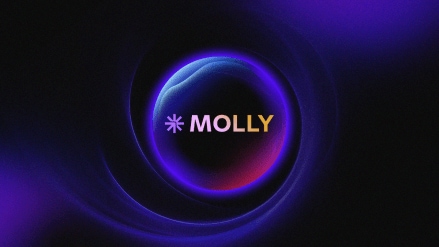The digital landscape is considered to be at its fastest revolving axle with an innovation coming up every day. In such a scenario, the quest for effective marketing strategies often feels like navigating a labyrinth. Enter Molly, heralded as the world’s first AI marketer. As we stand on the brink of its launch, scheduled for early 2025, the hype around Molly is palpable. But amidst the excitement, there are pressing questions: Is Molly a genuine breakthrough in marketing technology, or is it just another overhyped product destined to fizzle out?
Molly’s creators tout it as a revolutionary advancement in marketing technology. By leveraging vast amounts of data, including market trends and competitor analysis, Molly claims to automate and optimise entire marketing campaigns. The AI is designed to adapt in real-time, adjusting strategies based on performance metrics to enhance campaign effectiveness.
However, the question remains: Does Molly live up to its claims, or are we witnessing yet another case of inflated promises? While the idea of an AI managing complex marketing tasks is compelling, there’s a significant gap between theoretical capabilities and practical outcomes.
Data privacy and ethical concerns
One of the major selling points of Molly, according to Utkarsh Khandelwal, CEO and founder, Infloso, is its ability to process and utilise data efficiently. Yet, this brings up substantial concerns about data privacy. According to Khandelwal, Molly processes vast amounts of information from the internet, including sensitive brand data. Despite assurances that it filters out outliers and avoids direct replication of content, the risk of unintended data breaches or misuse remains a concern.
Moreover, while Molly’s accuracy in handling data-related tasks is reportedly high, with a claimed precision of 100%, there’s no standard benchmark for evaluating the accuracy of its creative outputs. Creativity is inherently subjective, making it challenging to assess whether Molly’s creations are genuinely innovative or simply rehashes of existing ideas. To think of it, AI containing the ability to generate ideas out of the blue seems too good to be true, isn’t it?
What is the impact on the market?
The rise of AI tools like Molly often sparks debates about job displacement. Molly’s tagline is that the product will take your job away. Molly’s ability to automate tasks traditionally performed by marketing professionals raises questions about its impact on employment. The founder of Infloso asserts that Molly is designed to complement, not replace, human roles. However, with automation handling repetitive tasks, there’s a risk that some marketing positions could become redundant.
“While we’re not here to replace jobs, those who effectively utilise Molly will likely outpace those who don’t,” Khandelwal added. While AI tools may indeed shift the job market and simultaneously reward those who adapt to it, this also underlines a broader concern about what happens to the ones who get sidelined.
Molly’s pricing is touted as being more affordable compared to traditional marketing agencies and in-house teams. In a price-sensitive market like India, this could make Molly an attractive option for startups and small businesses. Yet, the real value proposition remains to be seen. Will the cost savings translate into meaningful benefits for users, or will they find the tool lacking in practical application?
The verdict
As Molly prepares for its debut, it is safe to assume that the marketing community remains divided on how effective this new product is. The promise of an AI that can autonomously manage and optimise marketing campaigns is intriguing, but scepticism persists. The key questions about data privacy, creative accuracy, job displacement, and cost-effectiveness will only be answered with time and real-world use.
In the end, while Molly may represent a significant technological advancement, its true impact and effectiveness will only become clear as it is put to the test in practical scenarios. For now, the marketing world should approach with cautious optimism, weighing the potential benefits against the inherent risks.
